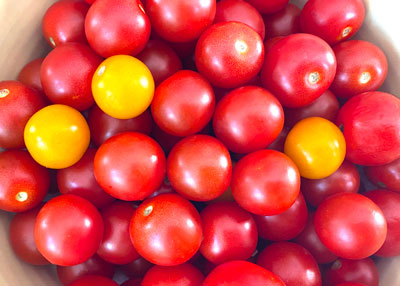Summer tomatoes
Anyone who has bought Big Boy, Beefsteak, Whopper or one of the other “burger-sized” slicing tomatoes to grow in a Texas garden has found out the hard way that they produce only a few fruit here in Texas before they shut down when it starts to turn hot. My personal opinion: They should never be sold in Texas!

High temperatures (in the 90s) lower the viability of tomato pollen, preventing pollination in the process. Low humidity and drying winds make things even worse. Large-fruiting varieties are much more impacted than small and mid-sized types.
Curiously, pollen becomes sticky at high humidities and in temperatures in the low 60s, so pollination is once again suppressed. And, once again, smaller-fruiting types are the better choices. Personal suggestion: give the great Super Sweet 100s a try. They’re ultra-productive and sensationally tasty! (Great for the fall garden if you can find and plant them immediately.)
Another interesting tomato tip…
University vegetable specialists also tell us that tomatoes may begin to turn yellow or orange and then fail to mature into the rich, red color we associate with fully ripened tomatoes.
Once again you can blame the high temperatures. The red pigments fail to form even though the fruit continues ripening. The fruit has essentially cut itself off from the rest of the plant physiologically, even though it may still be hanging on the vine.
Many of these specialists recommend harvesting the tomatoes when they reach that stage (just starting to turn) to get them out of harm’s way (birds, squirrels, raccoons, sunscald, etc.) and letting them finish ripening on a towel or newspapers on a countertop in air conditioning indoors. They assure us we will lose no flavor or nutritional value and we’ll have picture-perfect tomatoes in the process.
